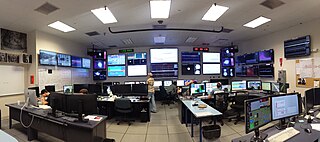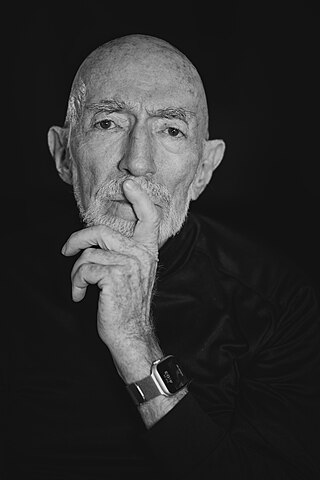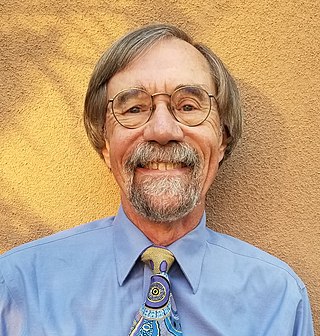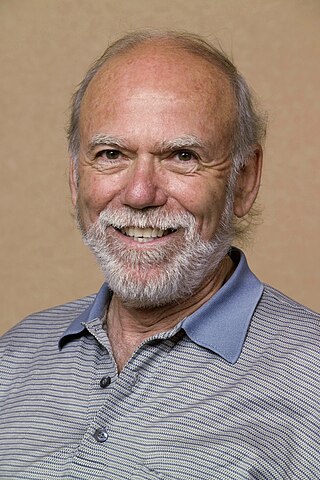Related Research Articles

The Laser Interferometer Gravitational-Wave Observatory (LIGO) is a large-scale physics experiment and observatory designed to detect cosmic gravitational waves and to develop gravitational-wave observations as an astronomical tool. Two large observatories were built in the United States with the aim of detecting gravitational waves by laser interferometry. These observatories use mirrors spaced four kilometers apart which are capable of detecting a change of less than one ten-thousandth the charge diameter of a proton.

Kip Stephen Thorne is an American theoretical physicist known for his contributions in gravitational physics and astrophysics.

Rainer "Rai" Weiss is a German-born American physicist, known for his contributions in gravitational physics and astrophysics. He is a professor of physics emeritus at MIT and an adjunct professor at LSU. He is best known for inventing the laser interferometric technique which is the basic operation of LIGO. He was Chair of the COBE Science Working Group.

Ronald William Prest Drever was a Scottish experimental physicist. He was a professor emeritus at the California Institute of Technology, co-founded the LIGO project, and was a co-inventor of the Pound–Drever–Hall technique for laser stabilisation, as well as the Hughes–Drever experiment. This work was instrumental in the first detection of gravitational waves in September 2015.

Robert M. Wald is an American theoretical physicist and professor at the University of Chicago. He studies general relativity, black holes, and quantum gravity and has written textbooks on these subjects.
Bernard F. Schutz FInstP FLSW is an American and naturalised British physicist. He is well known for his research in Einstein's theory of general relativity, especially for his contributions to the detection of gravitational waves, and for his textbooks. Schutz is a Fellow of the Royal Society and a Member of the US National Academy of Sciences. He is a professor of physics and astronomy at Cardiff University, and was a founding director of the Max Planck Institute for Gravitational Physics in Potsdam, Germany, where he led the Astrophysical Relativity division from 1995 to 2014. Schutz was a founder and principal investigator of the GEO gravitational wave collaboration, which became part of the LIGO Scientific Collaboration (LSC). Schutz was also one of the initiators of the proposal for the space-borne gravitational wave detector LISA, and he coordinated the European planning for its data analysis until the mission was adopted by ESA in 2016. Schutz conceived and in 1998 began publishing from the AEI the online open access (OA) review journal Living Reviews in Relativity, which for many years has been the highest-impact OA journal in the world, as measured by Clarivate.

Carlton Morris Caves is an American theoretical physicist. He is currently professor emeritus and research professor of physics and astronomy at the University of New Mexico. Caves works in the areas of physics of information; information, entropy, and complexity; quantum information theory; quantum chaos, quantum optics; the theory of non-classical light; the theory of quantum noise; and the quantum theory of measurement. He is a Fellow of the American Physical Society and of the American Association for the Advancement of Science and is a member of the US National Academy of Sciences.

Alessandra Buonanno is an Italian naturalized-American theoretical physicist and director at the Max Planck Institute for Gravitational Physics in Potsdam. She is the head of the "Astrophysical and Cosmological Relativity" department. She holds a research professorship at the University of Maryland, College Park, and honorary professorships at the Humboldt University in Berlin, and the University of Potsdam. She is a leading member of the LIGO Scientific Collaboration, which observed gravitational waves from a binary black-hole merger in 2015.

Barry Clark Barish is an American experimental physicist and Nobel Laureate. He is a Linde Professor of Physics, emeritus at California Institute of Technology and a leading expert on gravitational waves.

Nergis Mavalvala is a Pakistani-American astrophysicist. She is the Curtis and Kathleen Marble Professor of Astrophysics at the Massachusetts Institute of Technology (MIT), where she is also the dean of the university's school of science. She was previously the Associate Head of the university's Department of Physics. Mavalvala is best known for her work on the detection of gravitational waves in the Laser Interferometer Gravitational-Wave Observatory (LIGO) project, and for the exploration and experimental demonstration of macroscopic quantum effects such as squeezing in optomechanics. She was awarded a MacArthur Fellowship in 2010.

Vassiliki Kalogera is a Greek astrophysicist. She is a professor at Northwestern University and the Director of the Center for Interdisciplinary Exploration and Research in Astrophysics (CIERA). She is a leading member of the LIGO Collaboration that observed gravitational waves in 2015.
Peter Shawhan is an American physicist. He is currently professor of physics at the University of Maryland and was a co-recipient of the Breakthrough Prize in Fundamental Physics, the Gruber Prize in Cosmology, and the Bruno Rossi Prize for his work on LIGO.
Beverly K. Berger is an American physicist known for her work on gravitational physics, especially gravitational waves, gravitons, and gravitational singularities. Alongside Berger's more serious physics research, she is also known for noticing that vibrational patterns caused by local ravens were interfering with observations at the Laser Interferometer Gravitational-Wave Observatory.
Stanley Ernest Whitcomb is an American physicist and was the chief scientist at the Laser Interferometer Gravitational-Wave Observatory (LIGO) project when the first direct detection of gravitational waves was made in September 2015.
Peter Reed Saulson is an American physicist and professor at Syracuse University. He is best known as a former spokesperson for the LIGO collaboration serving from 2003 to 2007 and research on gravitational wave detectors.

Rana X. Adhikari is an American experimental physicist. He is a professor of physics at the California Institute of Technology (Caltech) and an associate faculty member of the International Centre for Theoretical Sciences of Tata Institute of Fundamental Research (ICTS-TIFR).
Alessandra Corsi is an Italian astronomer known for her work as part of the LIGO Scientific Collaboration on gravitational-wave astronomy, and on multi-messenger astronomy combining gravitational and electromagnetic signals. She is an associate professor of physics and astronomy at Texas Tech University.
Vuk Mandić is a Serbian-American astrophysicist and professor of physics and astronomy at the University of Minnesota. In 2017 he was elected a Fellow of the American Physical Society (APS).
Maria Alessandra Papa is an Italian physicist specializing in the observation of gravitational waves. She is a professor of gravitational wave astronomy at Leibniz University Hannover, and a researcher at the Max Planck Institute for Gravitational Physics. At the Max Planck Institute, she heads the Permanent Independent Research Group on Continuous Gravitational Waves; these are waves expected to be emitted continuously from rapidly rotating neutron stars, unlike the waves that have been detected from black hole and neutron star merger events. She also coordinates the use of the Einstein@Home project for volunteer computing in the search for gravitational waves in LIGO data.
Lisa Barsotti is a research scientist at the Massachusetts Institute of Technology Kavli Institute.
References
- ↑ Matthew Wright (2016-10-29). "The Chirps Heard Round the World". College of Computer, Mathematical, and Natural Sciences. Retrieved 2019-05-20.
- ↑ "Richard A. Isaacson — IIT Faculty Biography". phys.iit.edu. Retrieved 14 July 2023.
- ↑ NPR Weekend Edition: Billion Dollar Gamble, May 19, 2019. Retrieved 19 May, 2019
- ↑ Gravitational Radiation in the Limit of High Frequency, PhD dissertation, University of Maryland, 1967. Retrieved May 19, 2019
- ↑ New APS Award Honors Richard Isaacson, University of Maryland Physics Department, March 28, 2018. Retrieved May 19, 2019
- ↑ "Richard A. Isaacson Award in Gravitational-Wave Science". www.aps.org. American Physical Society. Retrieved 14 July 2023.